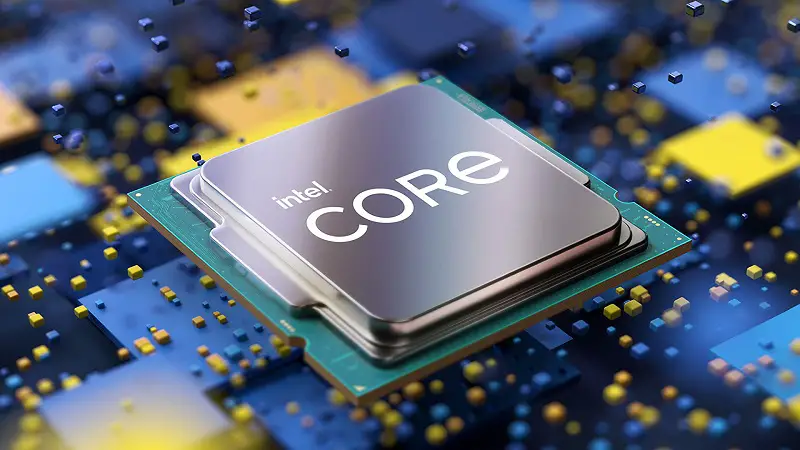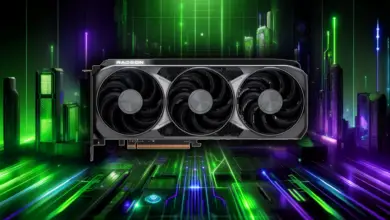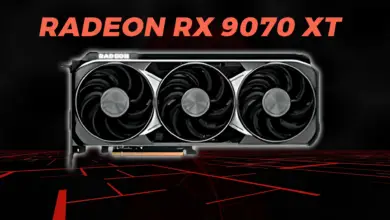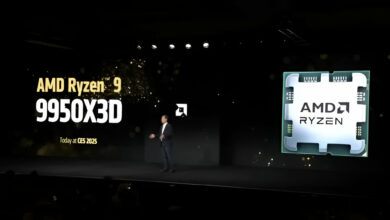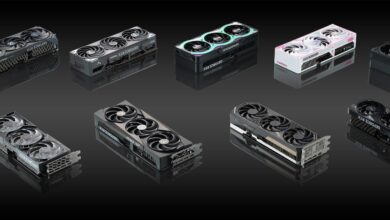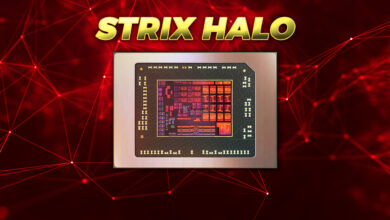Maximize the potential of Ryzen 9600X and 9700X with these GPUs
AMD’s Ryzen 9000 lineup has made its debut and the first two processors we have are the Ryzen 5 9600X and Ryzen 7 9700X. The 9600X is a 6-core, 12-thread CPU and the 9700X is an 8-core, 16-thread one. Both are aimed at the mid-range CPU segment, promising noticeable performance uplift over the last generation. The reviews are already out but what is necessary is what graphics card you should go with if you have one of these CPUs or are planning to buy one.
The processors bring a 5-10% improvement in the gaming scene and if you want to maximize their potential, we don’t recommend any less than the current-gen mid-range GPUs. At the moment, we have the RX 7000 and RTX 40 series cards in the market, offering some good value for money. However, the problem is knowing the exact price range from where you should pick a GPU for yourself. While simply going with an RTX 4090 seems the best-case scenario, most users will hardly choose a $1600 card to pair it with a sub-$300 or $350 processor.
Therefore, this guide brings you the best CPU-GPU combinations for those who want to maximize their gaming performance with the newest Zen 5 architecture found on the 9600X and 9700X. The guide contains GPUs starting from $300 all the way to $800, allowing users with various budgets to build a fast gaming computer without breaking the bank.
GPU Picks at a Glance
Consider the Following Before Buying a GPU
Target Resolution: Both 9600X and 9700X won’t have a problem handling high-end GPUs. So, the GPU choice ultimately comes down to your current monitor’s resolution. If you want to play at 1080p, the RTX 4060 is sufficient. For 1440p, RX 7700 XT, RTX 4070 Super, and RX 7900 GRE all are great with the latter two being no-compromise cards. However, for 4K, we wouldn’t recommend settling for less than RTX 4070 Ti Super.
Bottlenecking: Thankfully, bottlenecking won’t be an issue here as the 9600X and 9700X are highly potent to handle even high-end GPUs. On the other hand, if you are trying to opt for a CPU as slow as RX 6500 XT or GTX 1650 Super, you are limiting the capability of your computer immensely. Considering you are here to pick a GPU for ‘gaming’, we wouldn’t recommend buying an entry-level card that will force you to lower the settings to medium or high. Try to aim for ultra settings and 60 fps performance.
Budget: It’s crucial to divide your total budget for components. If you have already bought either of the two CPUs, divide the rest of your budget for other components, giving the highest priority to the GPU. Make sure you don’t cheap out on crucial hardware like power supply which can impact your system’s reliability. Divide the budget wisely, ensuring you have sufficient RAM, storage space, a motherboard with necessary slots/ports/headers, and a cooling solution.
Power Requirements: Lastly, if your PC is almost ready and just needs a GPU to be added for completion, check how much wattage your current PSU offers. Calculate the total maximum TDP of all the components and see how much wattage you will be left with excluding the GPU. If your PSU provides 600W capacity and you are left with unused 400W, try to stay under 350W or 300W if possible for your GPU, leaving room for situations where your components can draw more power than they are actually rated at.
Our Picks for the Best GPUs for Ryzen 5 9600X and Ryzen 7 9700X
Cores: 5120, VRAM: 16GB GDDR6, Memory Bus: 256-bit, TDP: 260W
The Radeon RX 7900 GRE is an exciting upper mid-range card that is unmatched in raster performance. Initially, it was launched for the Chinese market but was made available worldwide at the beginning of 2024. The card has so much potential that it doesn’t break a sweat running modern titles at 1440p on max graphical presets. Not only it is fairly faster than the RX 7800 XT for just $50 more, but it is also faster than the RTX 4070.
Great VRAM configuration, offering 16GB memory on a 256-bit bus is something that most gamers crave. Such a memory configuration is highly helpful in demanding titles that start to throttle on GPUs with less VRAM. Apart from excellent rasterization performance, it is also somewhat decent in Ray Tracing. Although, we would rather recommend going with Nvidia GPUs if that’s your priority but if you ever want to turn on ray tracing in a game or two, you will be still able to play the game with playable frame rates.
Apart from gaming, it also comes with AV1 encoding support, a feature that the RDNA 2 misses. If you are a streamer, you will love this feature. Fortunately, if you own a Ryzen 9000 CPU, particularly the 9700X, your computer will be excellent in productivity apart from gaming.
Cores: 3072, VRAM: 8GB GDDR6, Memory Bus: 128-bit, TDP: 115W
Some users don’t want an overkill gaming experience. Sometimes gaming at 1080p is all you need after a long and exhausting day. Despite being the slowest in the RTX 40 series, the RTX 4060 will keep up with the demands of the latest titles and you will be able to attain 60 fps without much hassles. This will be mostly at 1080p resolution but if you want to try 1440p gaming, the card will perform satisfactorily, assuming you don’t max out all the graphical presets.
Not only does the RTX 4060 cost less than all the other GPUs listed in our guide, but it is also the most power-efficient one. With a TDP of just 115W, it will reduce your electricity bills noticeably and will generate less heat. The RTX 4060 will be decent with the Ryzen 9600X but if you own 9700X, our next recommendation will suit you more since you will have a more balanced configuration. Nonetheless, the RTX 4060 can be used with either chip if you don’t have heavy gaming demands.
Cores: 3456, VRAM: 12GB GDDR6, Memory Bus: 192-bit, TDP: 245W
There are a handful of sub-$500 GPUs that offer excellent 1440p gaming performance but there are hardly any $400 GPU from the current generation that can keep up with the Radeon RX 7700 XT. Unfortunately, Nvidia failed miserably with the RTX 4060 Ti 8GB edition but the 7700 XT took over the Nvidia GPU in both raster and ray tracing performance by a noticeable margin. While one could still argue that RX 7700 XT’s ray tracing performance isn’t quite sufficient for 1440p gaming, it is still decent at 1080p resolution.
As for rasterization, there is hardly any game that can’t reach 60 fps at 1440p. Whether you want to play beautiful and demanding titles like RDR2, Hogwarts Legacy, and The Last of Us Part 1 or want to achieve high frame rates in eSports games, the RX 7700 XT is the best in the business for $400. Initially launched for $450, the RX 7700 XT did lack value as the 7800 XT was at just $50 higher price tag but offered much better performance. With the recent price cuts, the RX 7700 XT can be found for $400 or sometimes less depending on the retail store. The 7700 XT is the most ideal card for Ryzen 9600X and carries a good VRAM configuration for upcoming titles.
Cores: 7168, VRAM: 12GB GDDR6X, Memory Bus: 192-bit, TDP: 220W
The RTX 4070 Super is simply one of the best in the Ada lineup. For most gamers, it is more than sufficient, particularly in ray-tracing where AMD GPUs don’t possess the ability to perform well. The RTX 4070 Super receives a 20% Cuda Core increase along with a noticeable increase in Tensor and RT cores. The result is a staggering 19% higher performance than the RTX 4070 at just a $50 price increase. This is why the RTX 4070 has been successfully replaced in many retail stores as the 4070 provides a better price-to-performance ratio.
Although it doesn’t have any changes in the VRAM configuration, at the moment, its 12GB GDDR6X VRAM on a 192-bit bus is enough for high memory bandwidth output for faster transfer of data. Plus, a TDP increase of just 20W isn’t something that will bother most users, especially when it is already lower than the RX 7700 XT, which is significantly slower than the 4070 Super. If you are aiming for just the best raster performance, the RX 7900 GRE is our favorite recommendation as we stated earlier but if you want the best overall performance, including raster, ray tracing, and power efficiency, the RTX 4070 Super easily takes the crown.
Cores: 8448, VRAM: 16GB GDDR6X, Memory Bus: 256-bit, TDP: 285W
If you don’t want to settle for anything that can’t play games at 4K, the RTX 4070 Ti Super is the best solution, at least according to the capabilities of Ryzen 9600X and 9700X. It’s best to pair it with the 9700X for a fairly balanced configuration but the 9600X will be quite ok if you want to cut the cost further. Nonetheless, the RTX 4070 Ti Super has a similar story as the RTX 4070 Super. However, it not only replaces the 4070 Ti by offering higher cores, but it also brings a better memory configuration, something that the RTX 4070 Ti lacked against AMD’s Radeon RX 7900 XT.
Even though the 4070 Ti Super is expensive at $800, it can play games at 4K resolution quite well and can crush any title with the max presets at 1440p. Don’t buy it if you want a consistent 60 fps gameplay but buy it if you don’t want any frame rate limitations. Be prepared to see frame rates in triple digits and solid gameplay even with ray tracing on. With an increase in its VRAM from 12GB to 16GB and hence, a wider memory bus, the 4070 Ti Super is able to transfer more data to its processor, resulting in better performance at higher resolution, especially in memory-hungry games.
FAQ
Is Ryzen 9600X faster than Ryzen 7600X for gaming?
The Ryzen 9600X provides marginal performance uplifts over the 7600X but does offer slightly faster single and multi-core performance. If you own a 7600X or can find it cheaper than the 9600X, it’s best to skip the latter.
Can I use an RTX 4090 with the Ryzen 9700X?
Definitely. Ryzen 7 9700X is a powerful 8-core, 16-thread CPU that won’t bottleneck the RTX 4090 in the least. Even though you will see better performance with chips like Ryzen 7800X3D, which costs the same as 9700X, the latter does have some advantages in multi-threaded performance.
Should I go with RTX 4070 Super or RX 7800 XT?
RTX 4070 Super is faster in both raster and RT tests but the 7800 XT is cheaper. Decide according to your needs and budget. Either of them will be good for 1440p gaming but it will be best to stretch your budget a bit more if you can currently afford RX 7800 XT.
